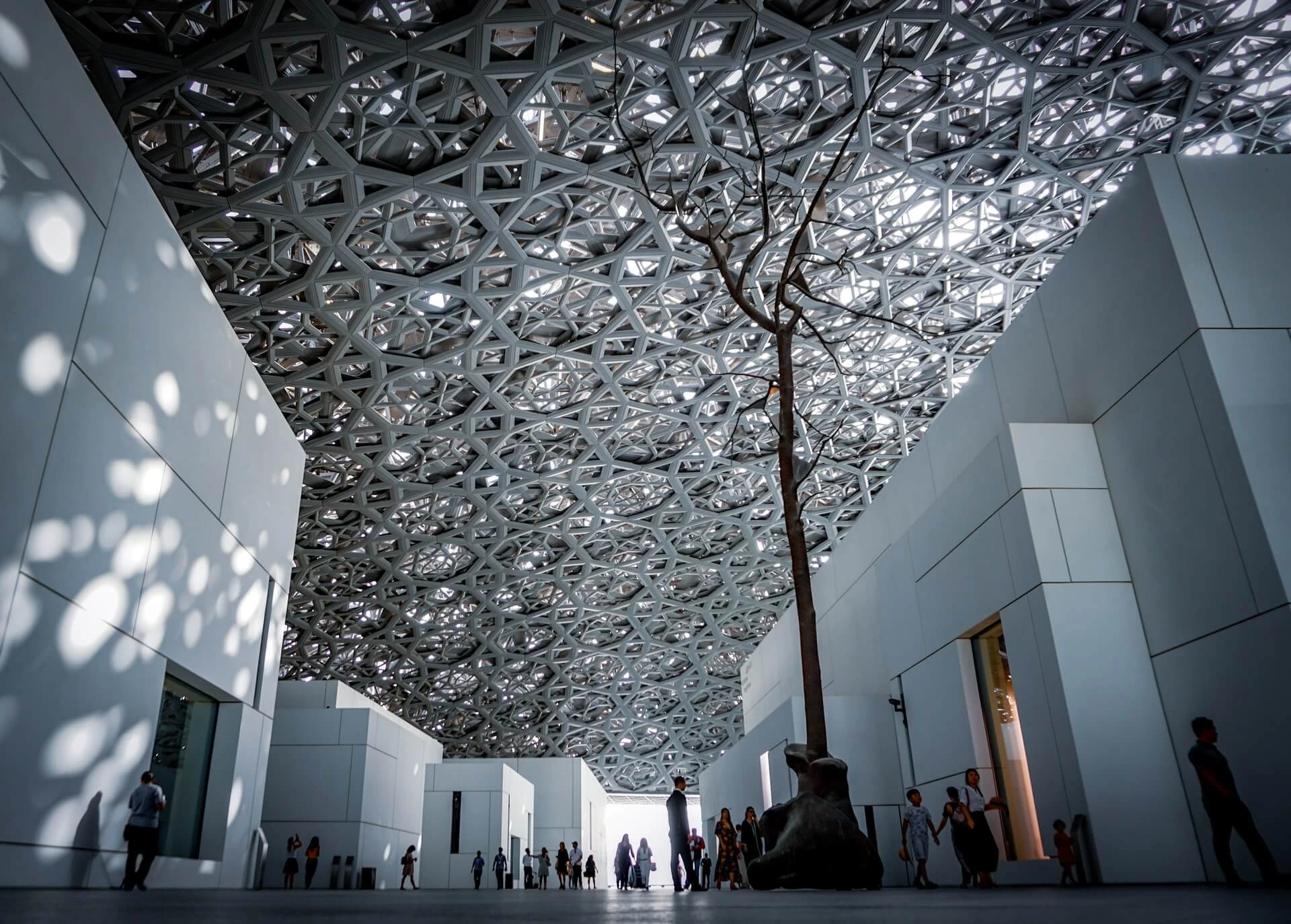The United Arab Emirates (UAE) is a federation of seven emirates located on the southeastern corner of the Arabian Peninsula. Known for its modern cities, luxurious lifestyle, and cultural heritage, the UAE is a symbol of transformation from desert landscapes to futuristic skylines. The country’s strategic location between Asia, Europe, and Africa makes it one of the most influential nations in the Middle East.
With over 200 nationalities living and working here, the UAE stands as a global hub of diversity and innovation. Understanding the countries (emirates) in the UAE helps travelers, investors, and residents appreciate its unique blend of tradition and progress.
Understanding the UAE
The UAE was established on December 2, 1971, when six emirates — Abu Dhabi, Dubai, Sharjah, Ajman, Umm Al Quwain, and Fujairah — united under one federation. Ras Al Khaimah joined later, in 1972. The formation was led by His Highness Sheikh Zayed bin Sultan Al Nahyan, the founding father of the UAE.
Since then, the nation has experienced phenomenal growth, becoming a global leader in trade, tourism, energy, and technology. The UAE’s success is rooted in its vision of unity and economic diversification.
The 7 Emirates of UAE in Order
Here’s the list of the seven emirates of the UAE in order from largest to smallest by area:
| Order | Emirate | Capital City | Area (km²) | Percentage of UAE Area |
|---|---|---|---|---|
| 1 | Abu Dhabi | Abu Dhabi City | 67,340 | 87% |
| 2 | Dubai | Dubai City | 3,885 | 5% |
| 3 | Sharjah | Sharjah City | 2,590 | 3.3% |
| 4 | Ras Al Khaimah | Ras Al Khaimah City | 1,684 | 2.2% |
| 5 | Fujairah | Fujairah City | 1,165 | 1.5% |
| 6 | Umm Al Quwain | Umm Al Quwain City | 777 | 1% |
| 7 | Ajman | Ajman City | 259 | 0.3% |
Abu Dhabi – The Capital Emirate
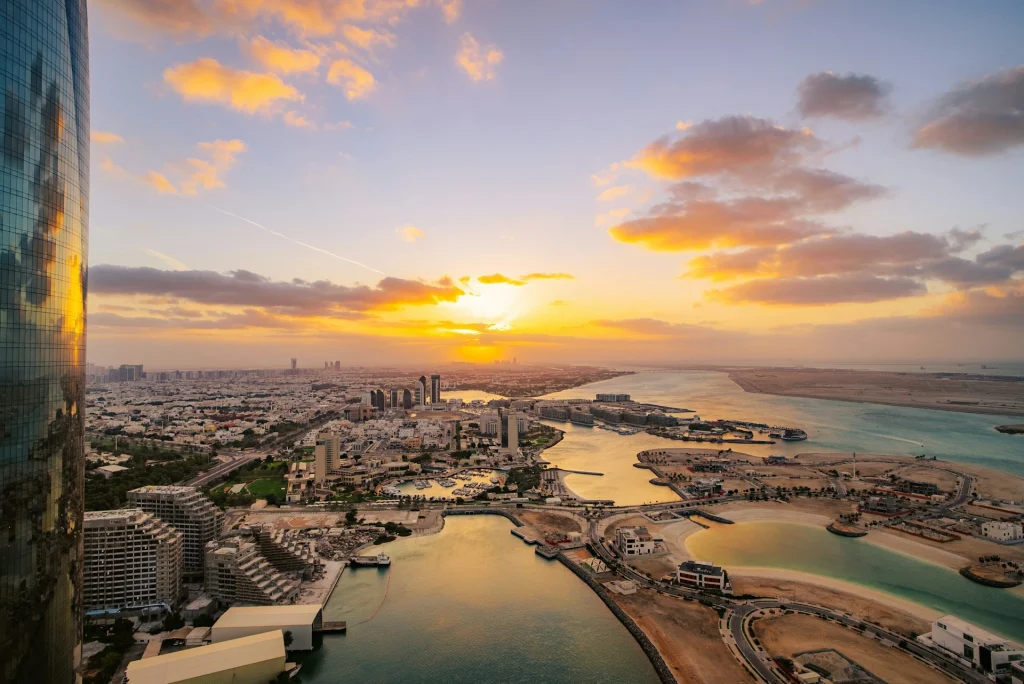
Abu Dhabi, the largest emirate and capital of the UAE, contributes over 60% of the country’s GDP. It is the political and administrative center of the nation, hosting the Presidential Palace, government offices, and numerous embassies.
Key Highlights:
- Home to Sheikh Zayed Grand Mosque, one of the largest mosques in the world
- Houses Louvre Abu Dhabi, a world-class museum celebrating art and culture
- Major industries: Oil, Gas, Renewable Energy, and Real Estate
- Vision 2030 focuses on sustainable development and economic diversification
Abu Dhabi’s vast deserts, pristine beaches, and cultural landmarks make it both the heart and soul of the UAE.
Dubai – The Modern Marvel
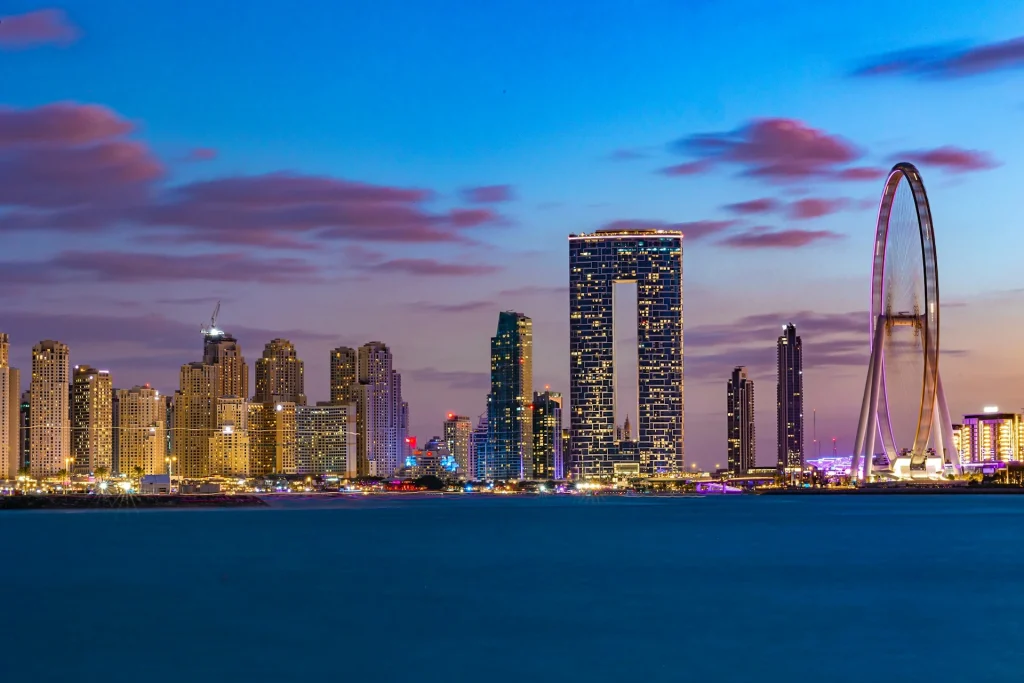
Known worldwide for its innovation and luxury, Dubai is the UAE’s most iconic city. It’s a symbol of ambition — home to Burj Khalifa, Palm Jumeirah, and Dubai Mall, attracting millions of visitors every year.
Highlights of Dubai:
- Business and tourism hub of the Middle East
- Hosts global events like Expo 2020 and Dubai Shopping Festival
- Houses Dubai International Airport (DXB) – one of the busiest in the world
- Offers 100% foreign ownership in free zones
Dubai’s success story proves that vision and determination can turn sand into skyscrapers.
Sharjah – The Cultural Capital
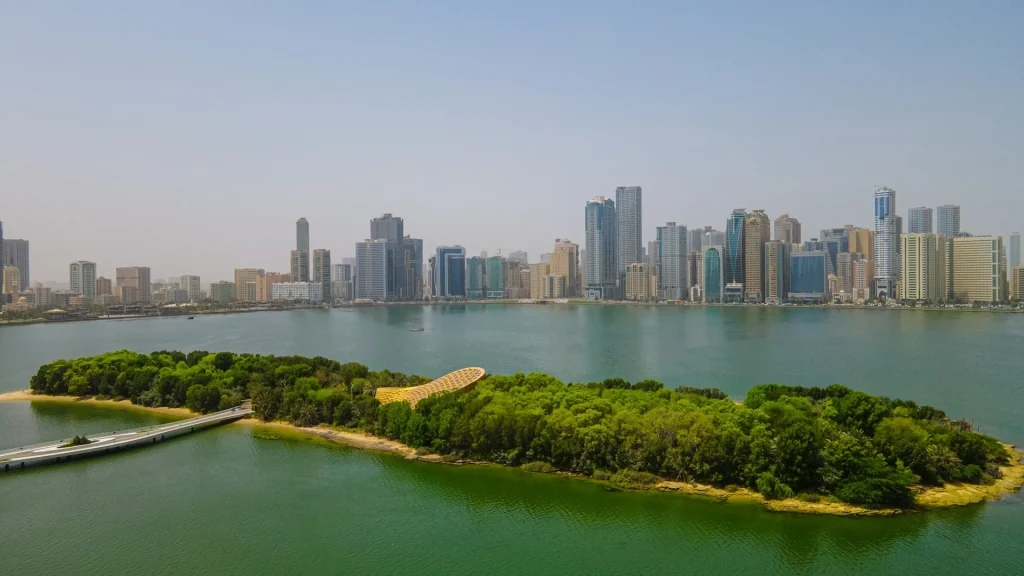
Sharjah is often called the Cultural Capital of the Arab World due to its dedication to art, heritage, and education. It boasts over 20 museums, traditional souks, and beautifully preserved Islamic architecture.
Key Features:
- Declared UNESCO World Book Capital (2019)
- Home to Sharjah Art Foundation and Sharjah Museum of Islamic Civilization
- A major contributor to the education sector, housing several universities
Sharjah maintains a perfect balance between cultural heritage and modern living.
Ajman
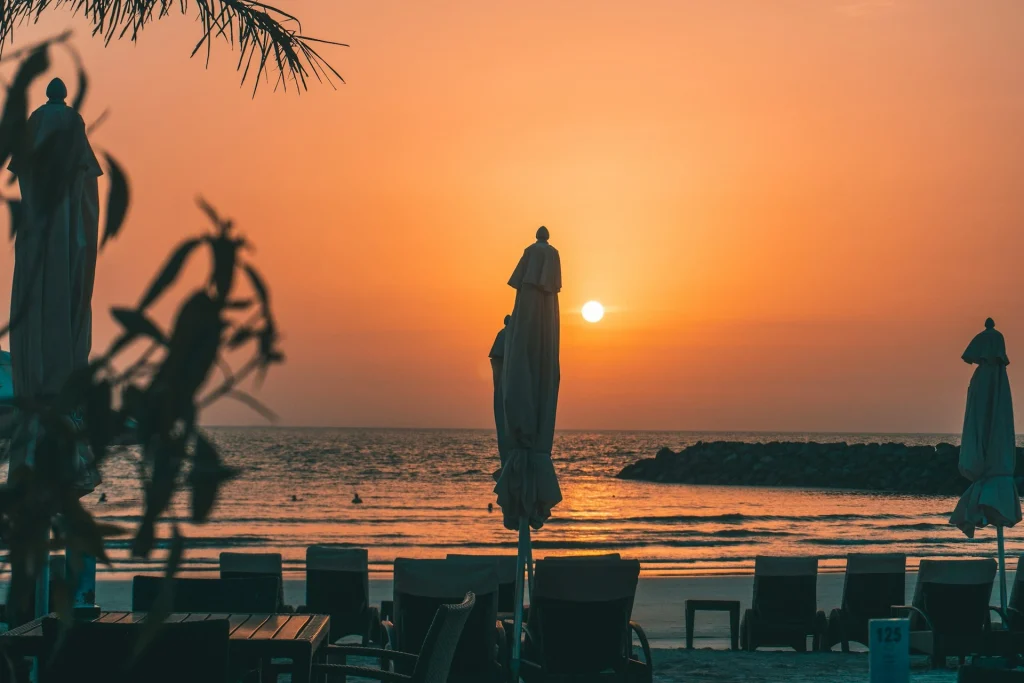
Ajman is the smallest emirate in the UAE, covering just 259 km². Despite its size, it offers a peaceful and affordable lifestyle, attracting many expatriates and small businesses.
Highlights:
- Known for Ajman Beach and Ajman Museum
- Rapidly growing real estate and hospitality sectors
- Affordable residential options compared to Dubai and Abu Dhabi
Ajman’s charm lies in its simplicity, combining modern development with traditional warmth.
Umm Al Quwain
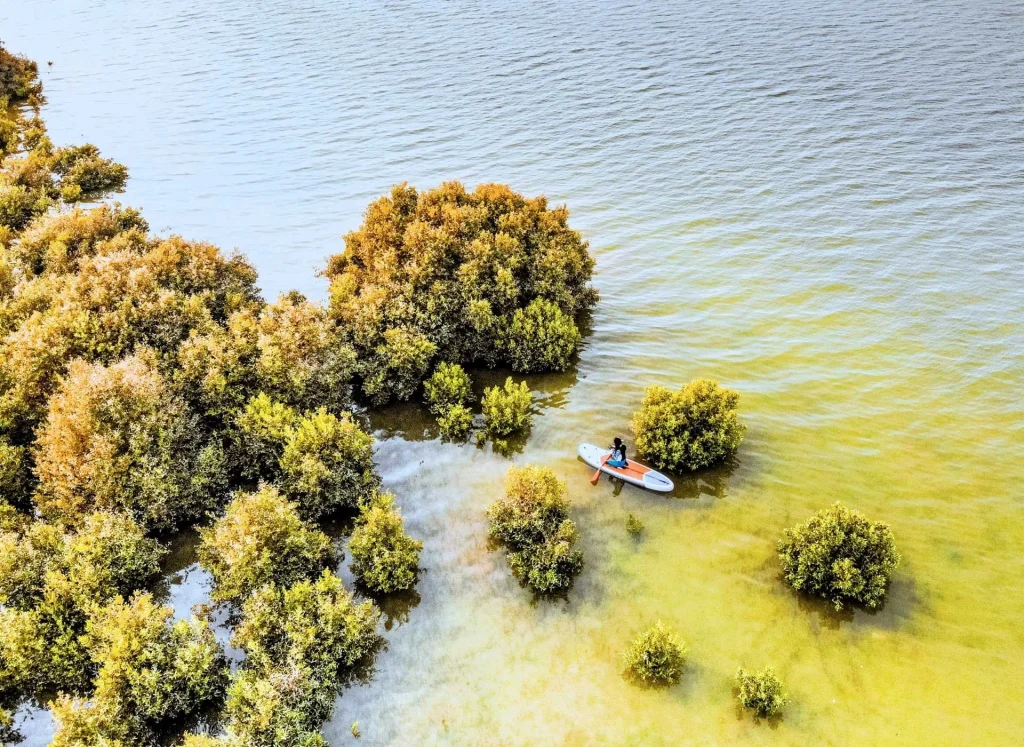
Umm Al Quwain (UAQ) ranks as the second smallest emirate. It’s known for its serene environment, mangrove forests, and heritage sites.
Key Aspects:
- Focused on eco-tourism and family-friendly attractions
- Home to Dreamland Aqua Park, one of the oldest water parks in the UAE
- A haven for nature lovers and those seeking tranquility
UAQ’s natural beauty and cultural identity make it a hidden gem among the emirates.
Ras Al Khaimah – The Adventure Hub
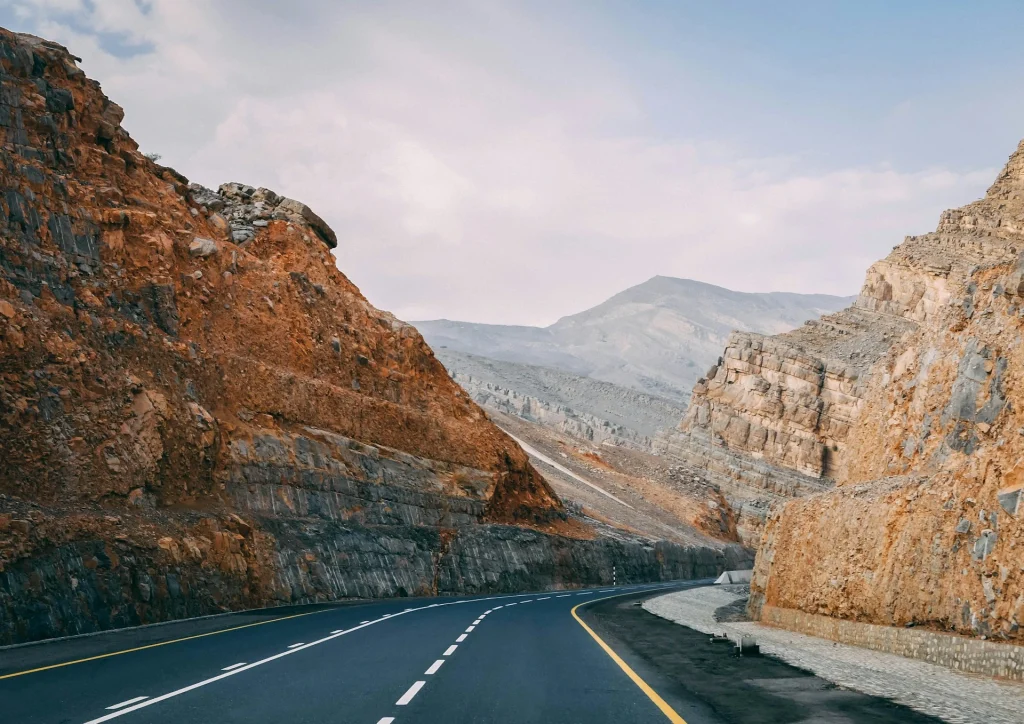
Ras Al Khaimah (RAK) is famous for its stunning mountains, beaches, and adventure tourism. It’s home to Jebel Jais, the UAE’s highest peak, and the world’s longest zipline.
Highlights:
- Rapid growth in tourism and manufacturing
- Offers investment-friendly business zones
- Popular for hiking, ziplining, and mountain resorts
RAK combines natural charm with economic potential, making it an exciting destination for both tourists and investors.
Fujairah – The Eastern Emirate
Fujairah is the only emirate located entirely on the eastern coast along the Gulf of Oman. It plays a vital role in maritime trade and logistics.
Key Features:
- Major seaport for oil exports and shipping
- Famous for Fujairah Fort and Snoopy Island
- Growing popularity in diving and coastal tourism
Its unique geography makes Fujairah essential to the UAE’s trade and tourism map.
Governance and Unity
The UAE operates under a federal system, where each emirate retains control over local matters while collaborating on national policies. The Federal Supreme Council, comprising the rulers of all seven emirates, governs major decisions.
This unity has ensured stability and prosperity for over five decades.
UAE Population Overview
As of 2025, the UAE population exceeds 10 million, with expatriates making up nearly 89% of the total. The native Emirati population continues to play a key role in governance, culture, and national identity.
UAE Population by Nationality
| Nationality | Estimated Population |
|---|---|
| Indians | 3.5 million |
| Pakistanis | 1.5 million |
| Bangladeshis | 1 million |
| Filipinos | 750,000 |
| Egyptians | 450,000 |
| Nepalis | 350,000 |
| Sri Lankans | 300,000 |
| Other nationalities | 1.15 million |
| Emiratis | 1.2 million |
UAE Population by Nationality Percentage (2025 Update)
| Nationality | Percentage of Total Population |
|---|---|
| Indians | 35% |
| Pakistanis | 15% |
| Bangladeshis | 10% |
| Filipinos | 7% |
| Egyptians | 5% |
| Emiratis | 12% |
| Others | 16% |
The data reflects the UAE’s global diversity, showcasing how people from all over the world call this nation home.
The Role of Expats in UAE’s Growth
Expatriates have played an essential role in transforming the UAE into a global powerhouse. From construction and education to healthcare and finance, they’ve contributed immensely to every sector.
The UAE government continues to promote inclusivity, introducing programs like the Golden Visa and long-term residency for skilled professionals.
Frequently Asked Questions (FAQs)
1. How many countries are there in the UAE?
The UAE isn’t made up of countries but seven emirates, each functioning like a state under one federal government.
2. What are the 7 emirates of the UAE in order?
They are Abu Dhabi, Dubai, Sharjah, Ras Al Khaimah, Fujairah, Umm Al Quwain, and Ajman.
3. Which is the smallest emirate in the UAE?
Ajman is the smallest emirate, covering only 259 km².
4. What is the second smallest emirate in the UAE?
Umm Al Quwain ranks as the second smallest emirate by area.
5. What percentage of the UAE population are Emiratis?
Emiratis make up about 12% of the total UAE population.
6. Which nationality is the largest in the UAE?
Indians form the largest expatriate community, representing around 35% of the population.
Conclusion
The United Arab Emirates is a shining example of unity, progress, and diversity. From the towering skyscrapers of Dubai to the serene beaches of Fujairah, each emirate contributes its own identity to the federation’s rich mosaic. With a forward-looking vision, sustainable goals, and a welcoming spirit, the UAE continues to lead as a model nation in the modern world.
For more details about UAE statistics and cultural heritage, visit UAE Official Government Portal

